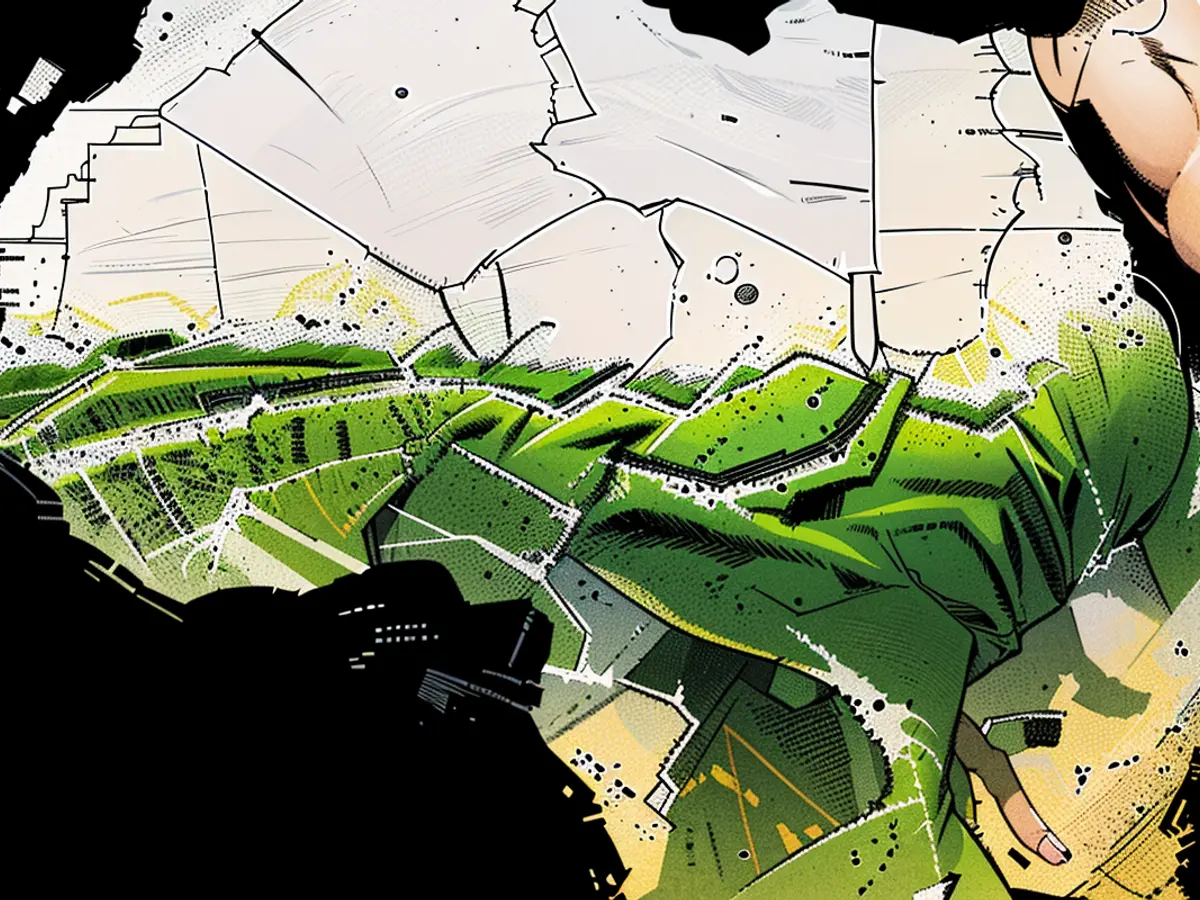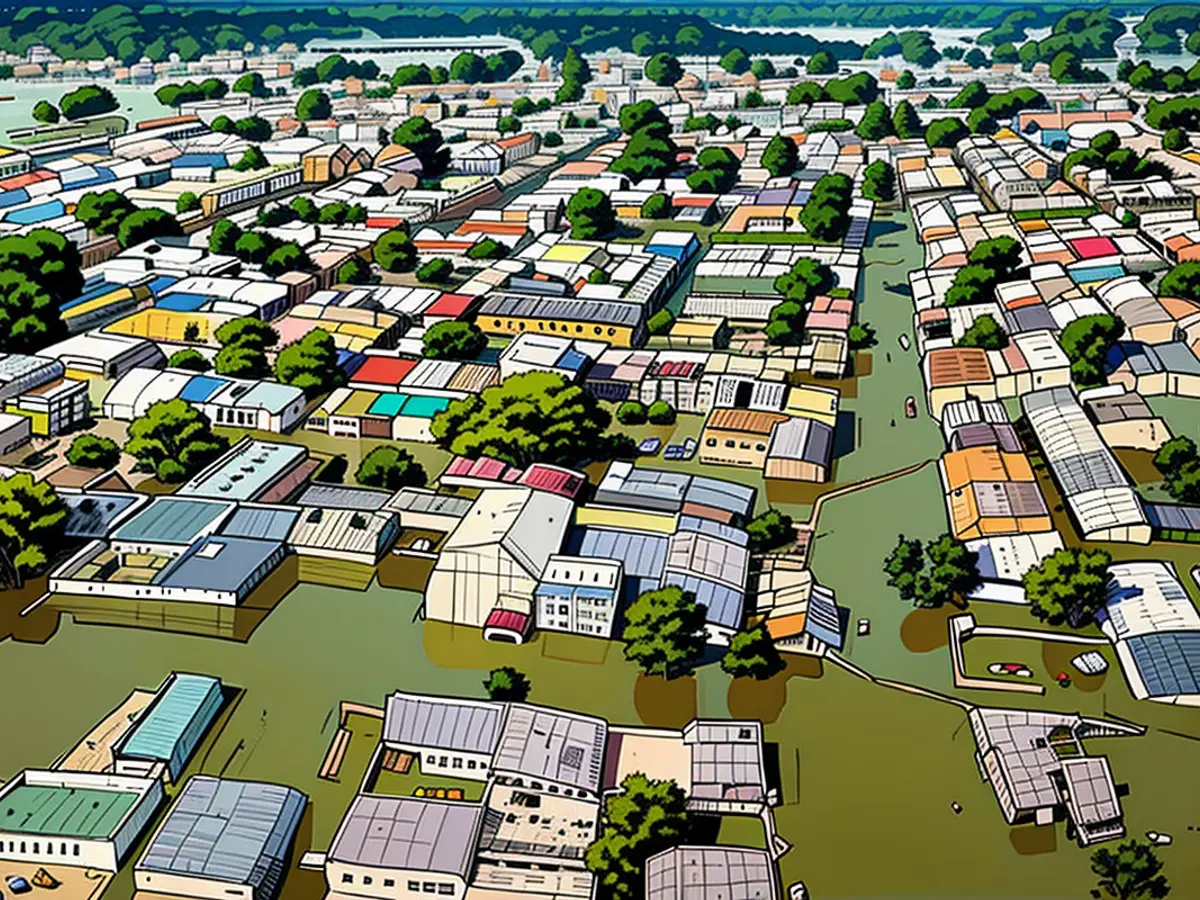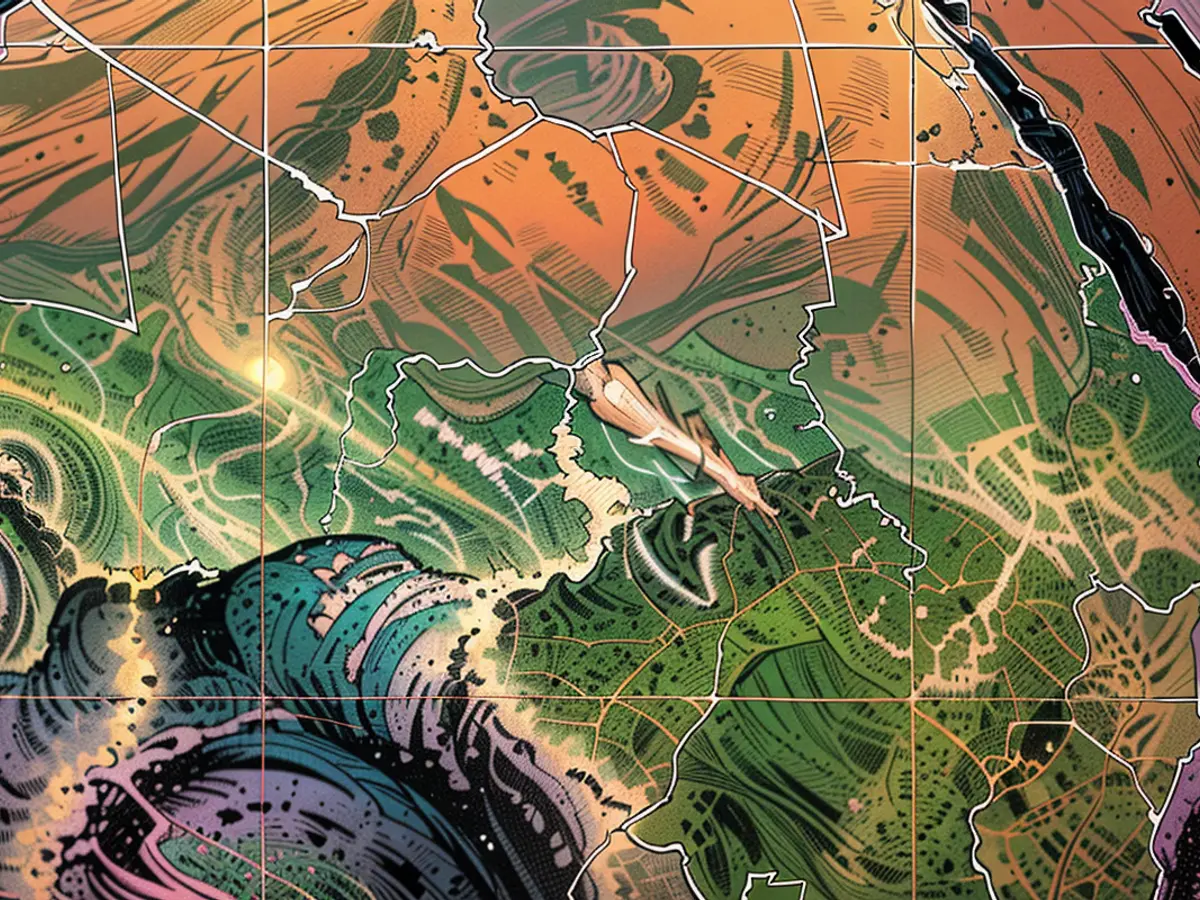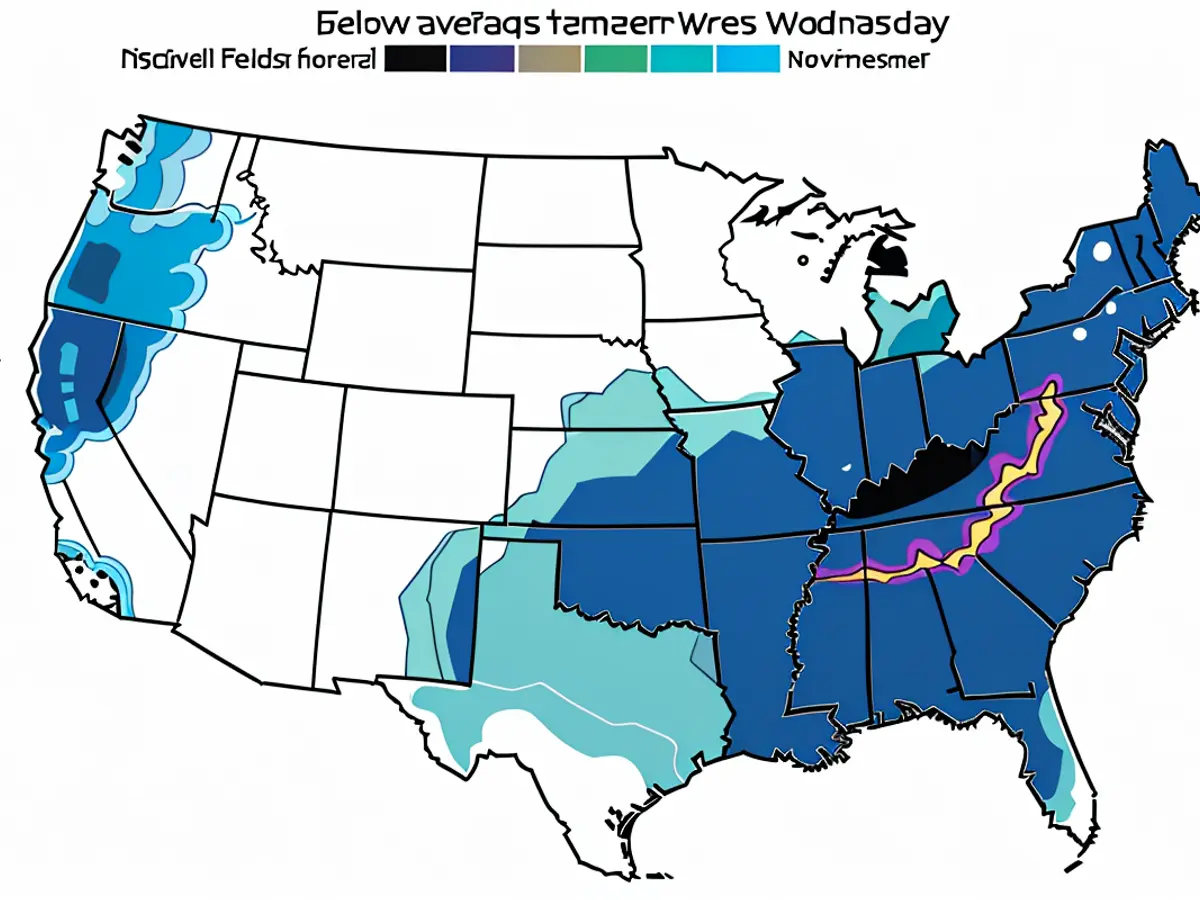Unusual meteorological alteration leads to Sahara Desert turning lush and verdant.
Recently, satellite observations have documented blooming plant life in previously arid regions of the southern Sahara, following unconventional storms. This unexpected weather pattern has resulted in catastrophic flooding as well. Scientific analysis suggests that global warming, mainly due to pollution from fossil fuels, is contributing to making such occurrences more likely.
NASA's MODIS satellite has captured depictions of vegetation expansion (denoted by green coloration) over Africa on September 12, 2024, in comparison to the same day in 2023. The extent of vegetation has expanded significantly in areas like Niger and Chad, and it is significantly more vibrant just above the equator in places like the Central African Republic. Typically, Africa's northern rainfall increases from July to September during the West African Monsoon season.
The weather anomaly can be attributed to an increase in stormy conditions as tropical air near the equator collides with hot, dry air from the northern continent. This stormy weather, known as the Intertropical Convergence Zone, frequently shifts northward during the Northern Hemisphere's summer months. In contrast, it often dips below the equator during the Southern Hemisphere's warmer period.
However, since mid-July, this zone appears to have shifted further north than usual, pushing storms into the southern Sahara, affecting Niger, Chad, Sudan, and even Libya, according to NOAA's Climate Prediction Center data.
Consequently, these areas of the Sahara Desert have experienced rainfall that is at least twice its normal amount, in some cases reaching over six times the expected level.

Two primary factors may have contributed to this bizarre shift north, as per Karsten Haustein, a climate researcher at Leipzig University in Germany.
The transition from El Niño to La Niña may have influenced the northward migration of this zone during summer 2024, Haustein suggested. El Niño, characterized by above-average equatorial Pacific ocean temperatures, often results in drier than average conditions in West and Central Africa. In contrast, La Niña or a developing La Niña can have the opposite effects.
Climate change constitutes the other significant factor.
"The Intertropical Convergence Zone, the cause of Africa's greening, moves further north as the world becomes warmer," Haustein explained. "Most models suggest this is the case."

Satellite imagery from NASA's MODIS satellite depicts vegetation extent (green coloring) over Africa on September 12, 2024, versus the same day in 2023. Vegetation reaches much farther north in 2024 in places like Niger and Chad and is more lush (darker green) just above the equator in a place like the Central African Republic. NASA
A study published in the journal Nature in June indicated more frequent northward shifts in this zone would occur within the next couple of decades as carbon dioxide levels, a byproduct of fossil fuel pollution, increase and the world warms.
An ominous harbinger
This anomalous shift is not only turning deserts green but also negatively impacting the Atlantic hurricane season and numerous African countries during recent months.
Countries experiencing below-average rainfall, like Nigeria and Cameroon, are enduring less rain than usual, with only 50 to 80% of their regular precipitation since mid-July, as per CPC data.

Meanwhile, drier regions, such as Niger, Chad, Sudan, Libya, and southern Egypt, have experienced over 400% their typical rainfall since mid-July, according to CPC data.
This significant rainfall caused devastating flooding in Chad, affecting nearly 1.5 million people and causing at least 340 fatalities, as reported by a United Nations briefing.
Similarly, flooding has claimed more than 220 lives and displaced thousands in Nigeria, primarily in its northern regions, according to previously reported CNN data.
Dangerous flooding also impacted Sudan in late August, resulting in over 132 casualties and destroying more than 12,000 homes.

Weather events such as these could be a result of climate change, according to Haustein, an expert in attribution studies responsible for identifying the extent to which climate change contributes to specific weather events.
As the world warms, it will be able to retain more moisture, leading to potentially wetter monsoons and more severe flooding comparable to the current season.
More investigation will be necessary to determine the role that climate change played in each flooding incident, but it may serve as a harbinger of future events, Haustein suggested.
"Every single event is influenced by climate change," Haustein stated. "Although no individual flood is directly caused by climate change, it has become more probable."

The shift in the Intertropical Convergence Zone, causing more frequent storms and rainfall in the southern Sahara, is a direct result of the changing weather due to global warming. This climate change-induced weather pattern has led to unprecedented rainfall in previously arid regions, causing severe flooding and resulting in significant damage.








